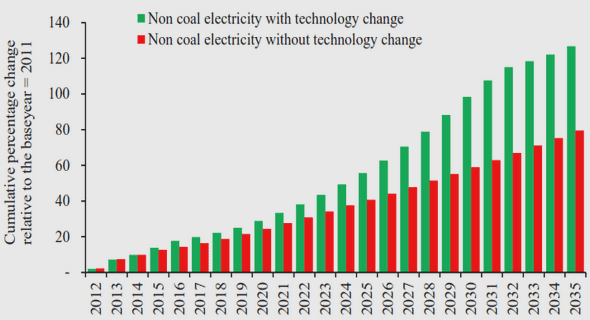(Downloads - 0)
For more info about our services contact : help@bestpfe.com
Table of contents
1 Introduction
1.1 Irregular firing in cortical networks
1.1.1 Irregular inputs, irregular outputs
1.1.2 Point-process and firing rate variability
1.2 Chaotic regimes in networks of firing rate units
1.3 Outline of the work
I Intrinsically-generatedfluctuationsinrandomnetworksofexcitatory-inhibitory units
2 Dynamical Mean Field description of excitatory-inhibitory networks
2.1 Transition to chaos in recurrent random networks
2.1.1 Linear stability analysis
2.1.2 The Dynamical Mean Field theory
2.2 Fast dynamics: discrete time evolution
2.3 Transition to chaos in excitatory-inhibitory neural networks
2.3.1 The model
2.3.2 Linear stability analysis
2.3.3 Deriving DMF equations
3 Two regimes of fluctuating activity
3.1 Dynamical Mean Field solutions
3.2 Intermediate and strong coupling chaotic regimes
3.2.1 Computing JD
3.2.2 Purely inhibitory networks
3.3 Extensions to more general classes of networks
3.3.1 The effect of noise
3.3.2 Connectivity with stochastic in-degree
3.3.3 General excitatory-inhibitory networks
3.4 Relation to previous works
4 Rate fluctuations in spiking networks
4.1 Rate networks with a LIF transfer function
4.2 Spiking networks of leaky integrate-and-fire neurons: numerical results
4.3 Discussion
4.3.1 Mean field theories and rate-based descriptions of integrate-and-fire networks
II Random networks as reservoirs
5 Computing with recurrent networks: an overview
5.1 Designing structured recurrent networks
5.2 Training structured recurrent networks
5.2.1 Reservoir computing
5.2.2 Closing the loop
5.2.3 Understanding trained networks
6 Analysis of a linear trained network
6.1 From feedback architectures to auto-encoders and viceversa
6.1.1 Exact solution
6.1.2 The effective dynamics
6.1.3 Multiple frequencies
6.2 A mean field analysis
6.2.1 Results
6.3 A comparison with trained networks
6.3.1 Training auto-encoders
6.3.2 Training feedback architectures
6.3.3 Discussion
6.4 Towards non-linear networks
6.4.1 Response in non-linear random reservoirs
6.4.2 Training non-linear networks
III Linking connectivity, dynamics and computations
7 Dynamics of networks with unit rank structure
7.1 One dimensional spontaneous activity in networks with unit rank structure
7.2 Two dimensional activity in response to an input
7.3 The mean field framework
7.3.1 The network model
7.3.2 Computing the network statistics
7.3.3 Dynamical Mean Field equations for stationary solutions
7.3.4 Transient dynamics and stability of stationary solutions
7.3.5 Dynamical Mean Field equations for chaotic solutions
7.3.6 Structures overlapping on the unitary direction
7.3.7 Structures overlapping on an arbitrary direction
7.3.8 Response to external inputs
8 Implementing computations
8.1 Computing with unit rank structures: the Go-Nogo task
8.1.1 Mean field equations
8.2 Computing with rank two structures
8.3 Implementing the 2AFC task
8.3.1 Mean field equations
8.4 Building a ring attractor
8.4.1 Mean field equations
8.5 Implementing a context-dependent discrimination task
8.5.1 Mean field equations
8.6 Oscillations and temporal outputs
8.6.1 Mean field equations
8.7 Discussion
9 A supervised training perspective
9.1 Input-output patterns associations
9.1.1 Inverting the mean field equations
9.1.2 Stable and unstable associations
9.2 Input-output associations in echo-state architectures
9.2.1 A comparison with trained networks
9.2.2 Different activation functions
Appendix A
Finite size effects and limits of the DMF assumptions
Finite size effects
Correlations for high ϕmax
Limits of the Gaussian approximation
Appendix B
DMF equations in generalized E-I settings
Mean field theory in presence of noise
Mean field theory with stochastic in-degree
Mean field theory in general E-I networks
Appendix C Unit rank structures in networks with positive activation functions
Dynamical Mean Field solutions
Appendix D Two time scales of fluctuations in networks with unit rank structure
Appendix E Non-Gaussian unit rank structures
Appendix F Stability analysis in networks with rank two structures
Bibliography



